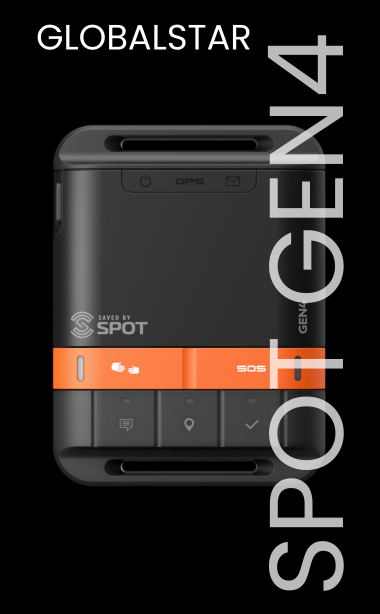You have no items in your shopping cart.
Is the new Inmarsat IsatPhone PRO a better alternative to Globalstar satellite phones such as the GSP-1600? This article compares them and discusses special discount offers for active Globalstar subscribers transitioning to Inmarsat.
We will also discuss some of the challenges facing Globalstar users in the future. Moderately priced but highly reliable alternatives for Globalstar satellite phones are analyzed, with an emphasis on the Inmarsat IsatPhone PRO.
A Brief History of Globalstar:
Globalstar launched its first satellites in February 1998. Full commercial Globalstar satellite phone service commenced in February 2000 with 48 satellites, 4 spares in orbit and 8 spares on the ground. Globalstar enjoyed immediate popularity largely because of its pioneering bent pipe and path diversity technologies.
In January 2007, Globalstar filed documents with the SEC indicating problems with the S-band amplifiers on its satellites which were expected to lead to premature degradation of its duplex voice and data communication services. Many people are familiar with the SPOT Satellite Messenger which uses Globalstar simplex data serviceswhich were not impacted by the S-band amplifier problem. Unfortunately, the prediction of premature degradation of duplex communications proved accurate, and quality of service for voice and duplex data degraded substantially by 2008 and did not recover significantly until recently.
In order to quickly reduce the impact of the S-band amplifier issue, Globalstar launched its eight first-generation ground spare satellites in 2007 and began building 24 new second-generation satellites. By 2013, these second-generation satellites had joined the satellites launched in 2007 to form a new 32-satellite configuration. Globalstar quality of service improved substantially, and Globalstar launched new bundled-minute service plans reflecting its improved quality of service. That said, users with mission-critical applications for their satellite phones should carefully consider the issues below.
How Long Will The Satellites Launched in 2007 Last?
We know that the original first-generation satellites launched between February 1998 and February 2000 degraded substantially by 2008. Their effective lifespan was roughly 8 to 10 years. Now, the identical first-generation satellites launched in 2007 account for 25% of the current 32-satellite configuration. Without them, the current quality of service for Globalstar voice and duplex data cannot be maintained. As their lifespan comes to an end, more second-generation satellites must be built, launched, and financed to replace them. This is a significant hurdle, and the eighth anniversary of the 2007 launches is just a few years away.
Will Call Drops by Globalstar Satellite Phones Be More Common in the Future?
Path diversity technology played a key role in the early success of Globalstar. To briefly explain what this means, imagine you are making a call from a Globalstar satellite phone and the satellite carrying that call suddenly becomes unavailable because it moves behind a mountain or other obstruction. The path diversity technology allows the Globalstar satellite phone to switch automatically to another nearby Globalstar satellite. In fact, the call will be rerouted over to the new satellite so smoothly that the caller will not even notice the transition. As many Globalstar users can attest, in the early years of Globalstar under the original 48-satellite configuration, the path diversity technology worked extremely well. Calls could be rerouted to new satellites again and again during a long call if necessary.
Is that still the case with the current smaller 32-satellite configuration? The maps below show Globalstar coverage as it stood a few years before the S-band amplifier issue and as it stands now. Remarkably, the Globalstar Primary Coverage Area appears relatively unchanged, even though considerably fewer satellites are available to provide coverage. Substantially maintaining the coverage area with fewer satellites was accomplished by spacing nearby satellites farther apart. Every choice has both benefits and costs. Lets go back to the explanation of path diversity technology. Now when a satellite carrying an ongoing call happens to move behind a mountain or a building or a tree, it is significantly less likely that there will be another satellite near enough to take over the call. Our experience so far in 2013 is that users operating in mountainous or heavily forested areas are most likely to be impacted by this issue.
 The map marked BEFORE shows Globalstar satellite phone coverage for voice and duplex data some time before the announcement of the S-band amplifier difficulties in 2007. The map marked AFTER is from the Globalstar web site as of July 2013. It shows the coverage based on the 8 first-generation satellites launched in 2007 and the 24 recently launched second-generation satellites.
The map marked BEFORE shows Globalstar satellite phone coverage for voice and duplex data some time before the announcement of the S-band amplifier difficulties in 2007. The map marked AFTER is from the Globalstar web site as of July 2013. It shows the coverage based on the 8 first-generation satellites launched in 2007 and the 24 recently launched second-generation satellites.Discount Offers for Current Globalstar Satellite Phone Owners Purchasing an Inmarsat IsatPhone PRO
In 2007, Outfitter Satellite offered some of the strongest incentive programs in the mobile satellite phone industry to help our Globalstar clients acquire Iridium satellite phones. Now, we are doing it again for Globalstar clients purchasing an IsatPhone PRO.
For a limited time, Outfitter Satellite is giving substantial discounts on purchases of a new IsatPhone PRO satellite phones activated on any of our GSPS North American Plans. The discount is$200 when you activate on the 2-year term GSPS North American Plan, or $100 if you activate on any of the 1-year term GSPS North American Plans. Call us at 615-889-8833 for complete details on this special discount offer.* This is not a trade in. Keep your Globalstar satellite phone!
Ten Advantages of the IsatPhone PRO
At approximately 7 pm CST on June 30, 2010, Outfitter Satellite had the privilege of activating the world's first commercial Inmarsat GSPS SIM card and making the world's first commercial GSPS call. In the last three years, the IsatPhone PRO has proven to be an effective, reliable, and popular satellite phone for our clients. If you are a Globalstar satellite phone user seeking an alternative, here are some of the advantages of the IsatPhone PRO relative to the GSP-1600 Globalstar satellite phone:
- The IsatPhone PRO is similar in size, cost, and monthly-fee cost to the most popular Globalstar satellite phone, the GSP-1600.
- Inmarsat has a long history in marine communications where reliability is mission critical. Because the Inmarsat IsatPhone PRO benefits from the same satellites Inmarsat developed for its popular broadband services, the IsatPhone PRO has a much larger coverage area than the GSP-1600 Globalstar satellite phone.
- During our current promotion*, if you activate on Outfitter Satellite's GSPS North American Plans you can get up to $200 off the regular $599 purchase price of the IsatPhone PRO. The $200 discount requires a 2-year term commitment. A U.S. phone number is available on these plans for an additional $9.95 per month.
- Outfitter Satellite offers an IsatPhone PRO Hurricane Kit with 50 prepaid minutes valid until May 20, 2014 for only $699. There are no monthly fees so this is an ideal plan if you are buying the satellite phone for emergency use only. Prepaid minutes that are not used roll forward if you reload the prepaid account before their validity runs out.
- A low-cost magnetic-mount car antenna is available for the IsatPhone PRO. By comparison, Globalstar satellite phones require a docking station for applications involving an external antenna.
- If you have an in-building application, the IsatDock PRO docking station will let you use an external antenna located up to 50 meters away. Marine docking stations are also available and include GPS tracking service options, compatibility with standard phone equipment, and Bluetooth integration.
- The IsatPhone PRO supports two-way 160-character SMS messaging (aka text messaging) as well as email-to-text reception. Globalstar phones can receive a 35-character SMS but do not have the ability to send an outbound SMS message.
- The IsatPhone PRO has up to 8 hours of talk time or 100 hours of standby time on a single charge. You can buy newly manufactured batteries for the IsatPhone PRO for only $25. By comparison, the current model Globalstar GSP-1700 offers 4 hours of talk time or 36 hours of standby on a single charge. Please call if you need batteries for the older GSP-1600 Globalstar satellite phone.
- Globalstar offers 9600 bps data which exceeds the 2400 bps available from the IsatPhone PRO, but the Inmarsat family of products includes land portable Inmarsat BGAN terminals which offer up to 492,000 bps internet access. The smallest BGAN terminals weigh only 3.6 lbs. Call us to purchase or rent a BGAN.
- Bluetooth headsets work with the IsatPhone PRO.
 The BEAM IsatDock MARINE for the IsatPhone PRO satellite phone gives you the benefit of an external mast antenna up to 50 meters from the docking station. It can also be connected to standard corded or cordless phones.
The BEAM IsatDock MARINE for the IsatPhone PRO satellite phone gives you the benefit of an external mast antenna up to 50 meters from the docking station. It can also be connected to standard corded or cordless phones. English
English











